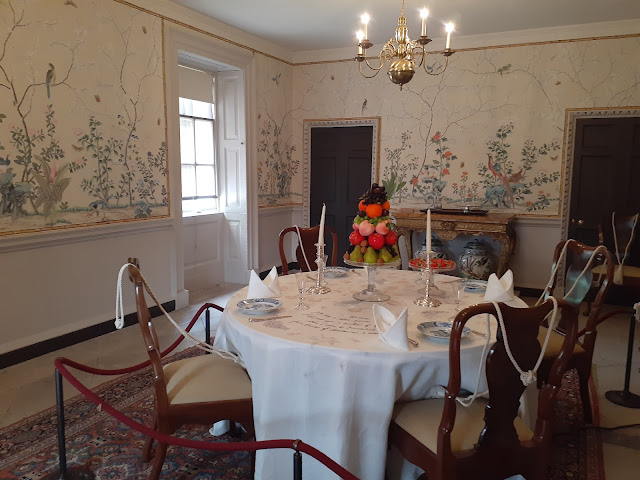Over the years I have visited a number of stately homes in England, most of them huge and many of them beautiful but overly grandiose, however I have never felt that I would be comfortable living in any of them. That was until I visited Marble Hill House in Twickenham. Not only does it have an idyllic setting right beside the river Thames but it is also comparatively modest in scale and has a cosy comfortable feeling about it.
The house was built by Henrietta Howard, a woman with a colourful history, who wanted a quiet country retreat from the court of George II. For many years Henrietta had been not only George's live in mistress but also the personal servant of his wife Caroline, a tricky situation requiring a lot of tact. Henrietta had been left as an orphan by the age of twelve and later made a disastrous marriage to a violent, gambler. Joining the court became a safe refuge for her. It was King George who gave her the funds to buy off her husband and to build Marble Hill house.
Built in the Neo-Palladian style in the 1720s, the house is a rare example of a house built for, and by, a woman in Georgian England. It was here that Henrietta could relax and enjoy the company of genuine friends. She became the queen of the 'Twickenham Set' which included Alexander Pope, Horace Walpole, Jonathan Swift, and John Gay, all literary men, plus a number of politicians. She was a patron of the arts and an enthusiastic hostess despite a life long hearing disability. I can imagine some lively evenings in the beautiful dining and drawing rooms at Marble Hill.
Alexander Pope said of Henrietta ' I know a reasonable woman, handsome and witty, yet a friend"
Eventually King George moved on to a new mistress and after the death of her first husband Henrietta was free to marry again. Her second marriage was a very happy one.
 |
 |
| I love this wall paper in the small dining room |
 |
| The Great Hall (photo by English Heritage) |
After touring the house I walked in the grounds. The old orchard and gardens are being restored with plantings likely used in the original gardens and the huge ice house is worth seeing. The grounds are peaceful so I sat for a while enjoying the view of the river and imagining how much Henrietta would have enjoyed this idyllic location, in the company of her friends, away from the gossip, intrigue and stiffness of the court of King George.
 |
| The restored gardens (photo by English Heritage) |
Included in the 60 acres surrounding the house are rugby, cricket, and hockey grounds, tennis courts and a children's play area. There is also a cafe in the old coach house. The estate is well used and much loved by the residents of Twickenham. Henrietta would be surprised, and no doubt delighted, by her legacy.
The house is located on Richmond Rd, St Margaret's area.
Open Wednesday to Sunday April to October. Admission is free but you are required to buy a guide to the house at a very minimal cost.






.jpg)